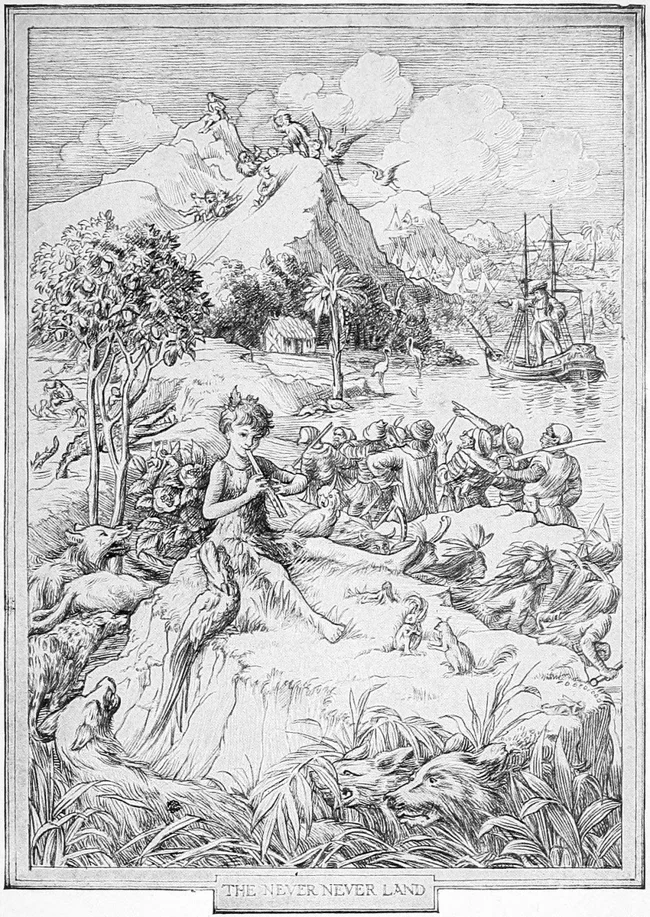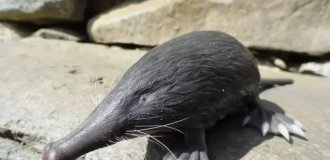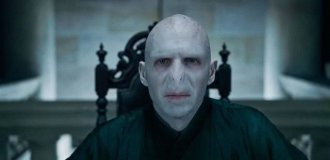A Strange and Dangerous Creature Named Peter Pan (13 photos)
Thanks to the efforts of Walt Disney and other screen adaptations, "Peter Pan" is perceived as a light and cheerful fairy tale. Ha-ha-ha, a crocodile with a ticking alarm clock inside. Hee-hee-hee, magic pollen and fairies. How cool! Pirates, wild animals, Indians, mermaids, a tropical island - romance!!! 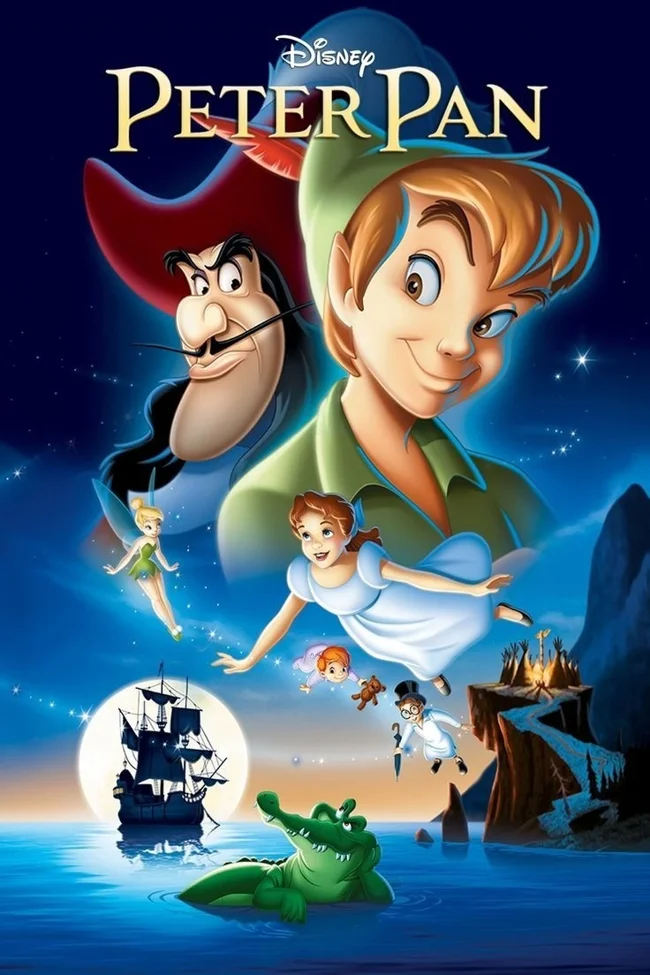
Treasure hunts, sword fights with pirates, magic pollen and flights over the island - what could be better, after all?
But all this is in the cartoon.
If we turn to the original, to the fairy tale by James Barrie, we will find that in the book everything is not as cheerful and blissful as in Disney.
And most of the questions are raised by none other than the main character of the work - Peter Pan himself.
Who is this strange boy? 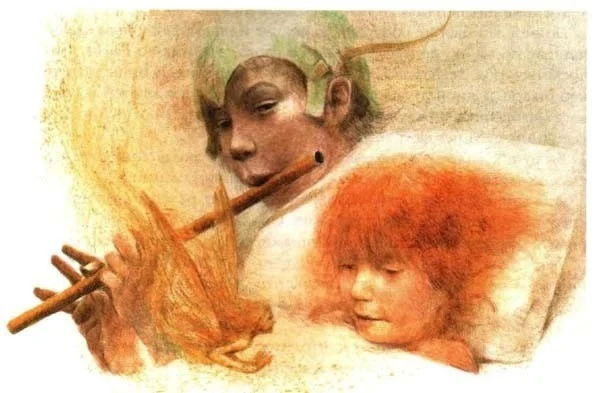
And in general - is he a boy?
But first I will tell you a story from life.
The famous Peter Pan monument in London's Kensington Gardens was, as is well known, created on the initiative and with the money of the book's author, James Barrie. It was erected on the night of April 30, 1912, without any permission - as Barrie himself later explained, he simply did not want publicity, wanting to make a surprise for London children. 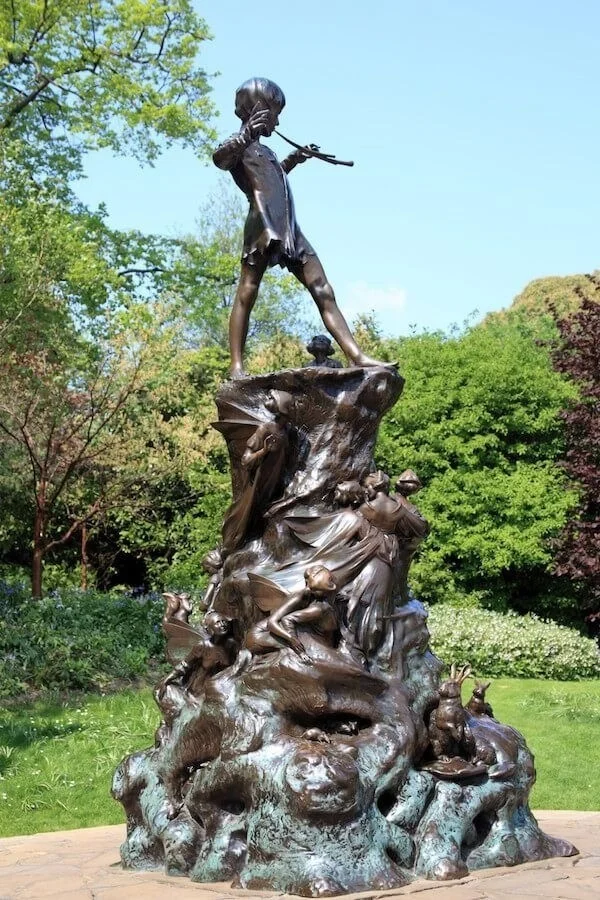
Barrie was scolded in parliament, accused of self-promotion, but they did not dare to demolish the monument - so, as a gypsy illegal construction, it has been standing in the park for more than a hundred years.
But that's not what I'm talking about.
Barry really wanted the model for the monument to be the famous photograph of his student Michael Llewelyn Davies in Peter Pan costume, this one. 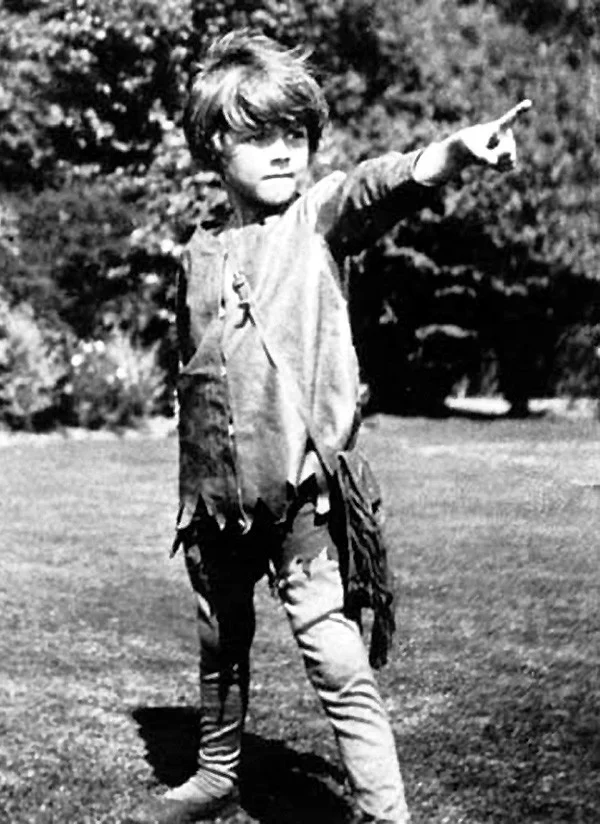
But the sculptor Frampton preferred to take another model - according to different versions, either George Goss or William A. Harwood. In the end, the author, who was also the customer, was somewhat disappointed with the result, saying that in Peter Pan on the monument "there wasn't enough devilry" ("didn't show the Devil in Peter").
And the mention of this word is very telling.
If you think about it, the leader of the "lost children" has so many oddities that it's time to talk not about a boy, but about some very suspicious creature.
First of all, Peter Pan exists on the border between our reality and some other reality.
For example, he not only doesn't distinguish between make-believe and real, which is why the boys are periodically forced to sit hungry:
"The difference between Peter and the other boys at such moments was this: they knew it was all make-believe, and for him make-believe and real were the same. This sometimes bothered them, especially when they had to pretend that they had already had dinner."
But the most amazing thing is that his "make-believe" is quite real. But only for him.
"And besides, Peter believed so much that he was eating, when he was pretending to eat, that he even noticeably gained weight." 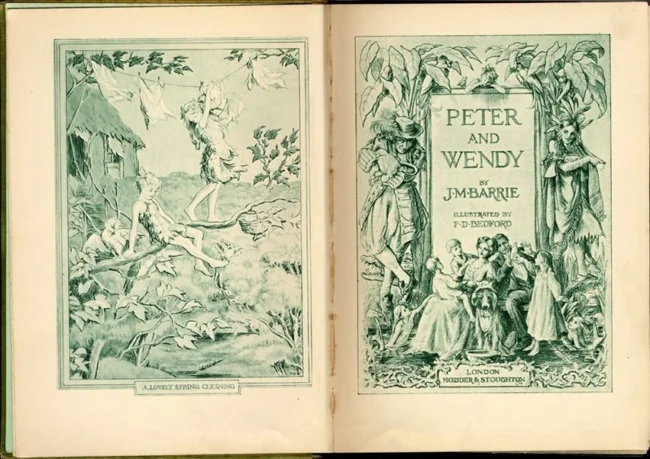
Secondly, this creature does not grow up and is not afraid of death - well, almost.
"Peter wasn't like other boys, but he got scared too. A shiver ran through his body, like a wave on the sea; but on the sea, wave after wave runs, and Peter shuddered only once. At that moment, he straightened up proudly, and a smile played on his face; his heart was beating in his chest like a drum. It seemed to say: "To die - that's a real adventure!"
His unwillingness to grow up sometimes resembles a denial of life as such. It seems that he simply has cut off the main condition of the continuity of life - the ability to love.
All the girls in the book are in love with Peter: Wendy, and the daughter of the Indian chief Tiger Lily, and the fairy Tinker Bell (who almost killed Wendy out of jealousy) - and he...
He just doesn't understand that happening.
"— Peter, tell me, how do you really feel about me?
— Like a devoted son.
— I thought so, — said Wendy and walked to the other end of the room.
— How strangely you speak, — Peter noted, sincerely not understanding her. — Tiger Lily is no worse than you. She seems to want something from me. But I don’t understand what. Maybe she wants to be my mother, too?
— No.
— What then?
— I don’t want to talk.
— Maybe Tinker Bell knows?
Tinker Bell was sitting in her boudoir behind the drawn curtain and eavesdropping.
Peter suddenly had an idea:
"Ding, maybe you want to be my mother?"
"You're a fool!" she shouted from behind the curtain in an angry voice.
"And I almost agree with her," Wendy snapped." 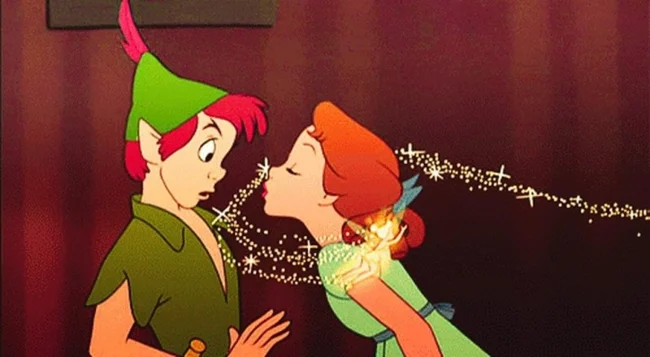
The inability to love is confirmed by another feature of this creature - it has the memory of an aquarium fish, it almost instantly forgets even the most important people for it. Even if they just did something good for it - remember, for example, the episode with the shadow sewn on Wendy. 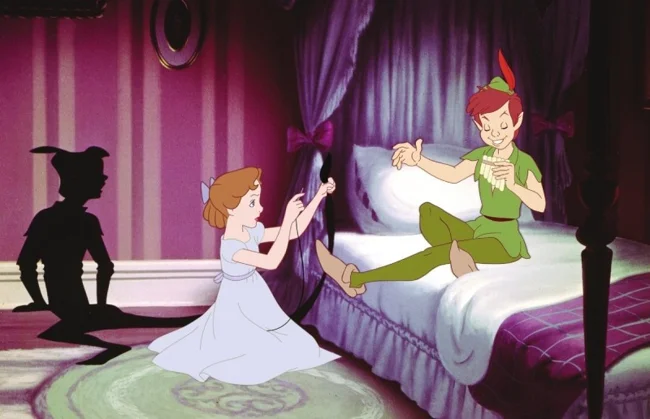
In general, "it also happened that, upon returning, he looked at them somehow strangely, as if he had forgotten who they were. His eyes became strange, unrecognizant. Wendy even got scared once..."
Very indicative in this regard is the meeting of the girl Wendy with Peter a year later. 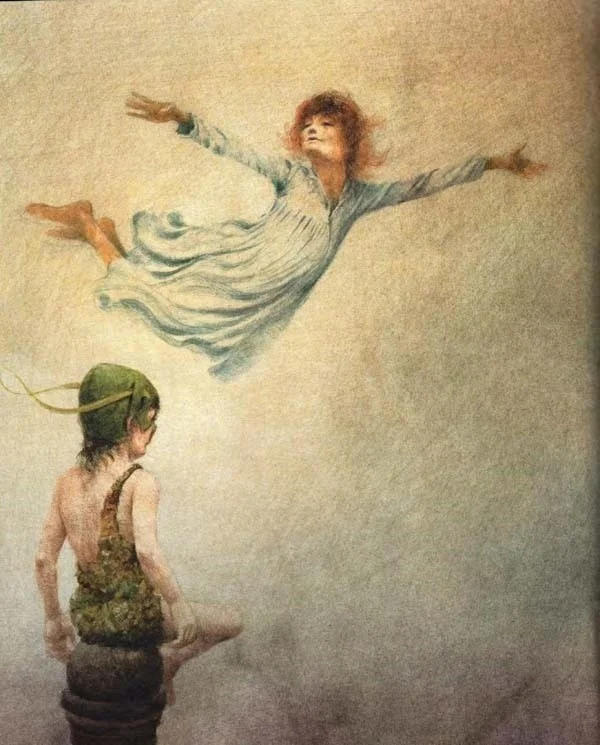
"She thought they would be vying with each other to reminisce about old times, but new adventures had driven everything from his memory that had come before.
"Who is Hook?" he asked with interest when she spoke of his sworn enemy.
"Don't you remember?" she was amazed. "You also killed him and saved our lives."
"I forget the dead," he said casually.
When Wendy timidly expressed the hope that Tink would be glad to see her, he asked:
"Who is Tink?
"Oh, Peter!" Wendy cried in horror.
She told him about Tink, but he still didn't remember her.
"There are so many of them," he said. "Perhaps she's dead?"
He must have been right, for fairies don't live long, but they're so small that a short life seems enough to them." 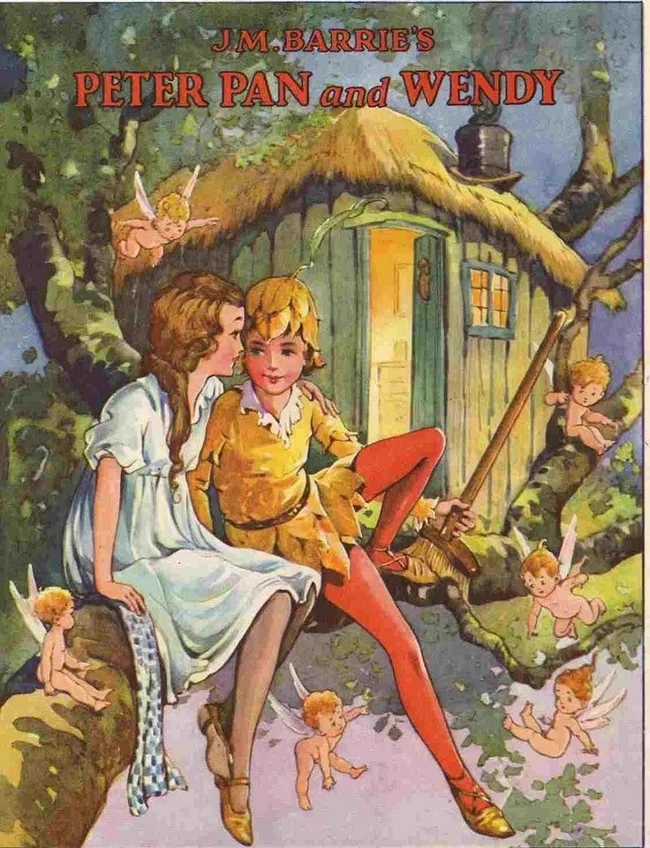
And if there is no love or even affection, then you can imagine what the real relationship is between Peter Pan and the "Lost Boys" he stole. In his tale, James Barrie tries not to focus on this, but sometimes he still lets it slip.
"There are sometimes more boys on the island, sometimes less, depending on how many are killed and all that; when they grow up, which is against the rules, Peter shortens them a little."
Curious, don't you agree? Shortens. Captain Hook, let me remind you, was also "shortened."
After this, it is no longer surprising what happened after the almost complete slaughter of the pirates and the capture of their ship.
"Some of the boys wanted the Jolly Roger to become an honest ship, but others thought it would be better to leave her a pirate ship; however, Captain Pan treated them like dogs, and they did not dare even to make a circular petition to him. They had to obey without question - it was more reliable that way. The little one got a dozen lashes for being confused when he received the order to lower the lead. And for the time being, everyone agreed that Peter had not yet become a pirate completely only because he wanted to lull Wendy's vigilance...". 
All these oddities accumulate from page to page, and soon the attentive reader is already perplexed. He seems to be reading a funny fairy tale, but at the same time some... not quite funny.
A fairy tale in which the author is clearly silent more than he says.
And the solution is simple.
Ears!
Pay attention to Peter Pan's ears in the most famous film adaptation - the Disney cartoon. 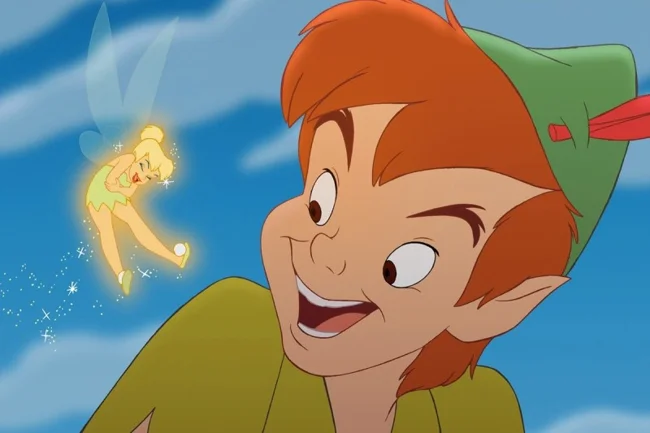
They are pointed.
And, as any Anglo-Saxon knows, pointed ears are a sure sign...
No, not elves. Or rather, not only elves.
But all the Little People living on the Other Side. Those who are called "evil spirits".
Today, in the minds of ordinary people, the word "evil spirits" is firmly associated with the devil, hell and the servants of Satan, but this is a purely Christian tradition. In fact, the division into this and the Other Side is much older, it dates back to pagan times.
And Peter Pan's attitude towards people fits perfectly into the traditional relations between evil spirits and people. To make it clearer, I will give an example from the folklore tradition. A typical evil spirit is Baba Yaga from fairy tales. The simplest question is - is she evil or good? 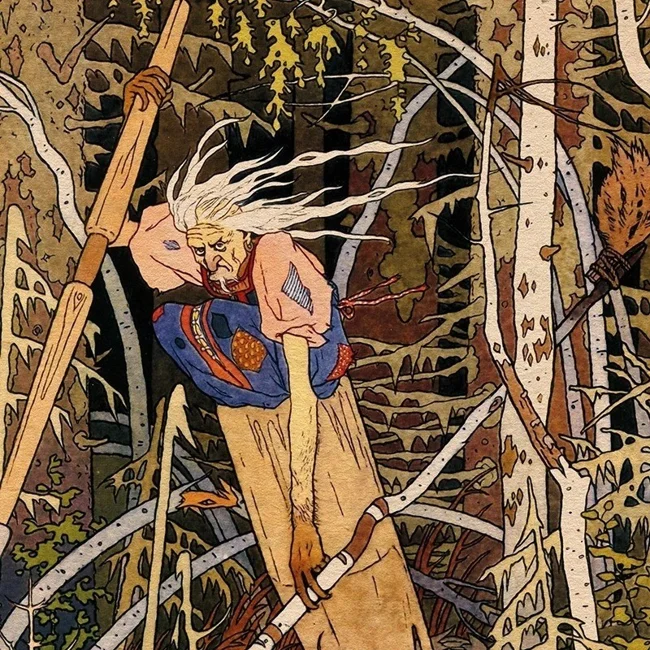
The correct answer is - it depends.
He will help someone, give a magic ball, which will show the way to Koshchei's kingdom, to the Other Side. And he will put someone on a shovel, put them in the oven, and then eat them.
I'll ride.
I'll lie around.
The Little People are neither evil nor kind, they simply cannot be measured by these categories. They are Others to us, we are Others to them - and that says it all. In addition, evil spirits are very flighty, unlike people, they do not live by logic and reason, they are children of mood.
A natural question arises: if Peter Pan is evil, where does he take the children?
What is this mysterious island Neverland, translated as Neverland, Somewhere, Neverland, Nowhere, the country of Neverness, the island Neverland or Nowhere?
Good question. 